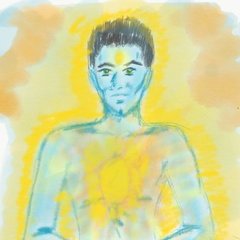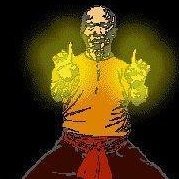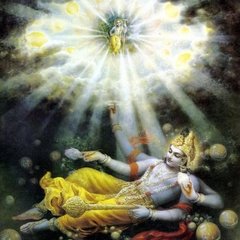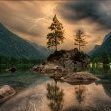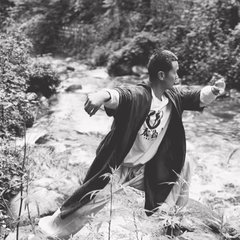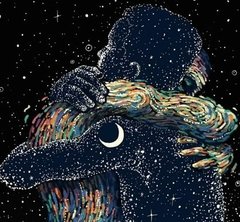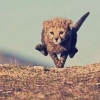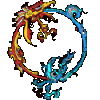Search the Community
Showing results for 'Dream'.
Found 7,590 results
-
A very practical view! This is about as good as it comes to exploring the physical. My view is that my universe is not the same as yours or anyone else's. We can't possibly see the same thing, at the same time, in the same way. We remanifest ourselves from second to second from the great underlying consciousness, but it is filtered through your brain, my brain, Prasanna's brain in different ways, because our conditioning, our memories, our mental habits, our karma, our attachments, our aversions are different. In some Sutras these would be called Buddhalands? (My understanding may be wrong there, and I would love a correction from Prasanna if that's the case) These universes are ad infinitum, springing from the nothingness of consciousness - consciousness which encompasses the past, present, and future as Now. This not only works in the breadth of quantity, but the height and depth of time, size, universes within universes, universes within atoms, that which we can't begin to imagine because of the limitations of our brains. Our universe may be contained within an atom, for all we know. This is actually a practical way to live, not an outdated meme, as I see it. The more I keep in the front of my awareness the unreality of the play that is playing out in front of my eyes, and don't buy into the separation of the 10,000 things, the more peace of heart I have. There is no cause for alarm, for anxiety, for stress. I walked my dogs this morning through a beautiful Florida group of trees, Spanish moss hanging, an eighth moon shining through the trees, a soft breeze hitting the receptor sensors on my skin. The sky was a mix of blue and coral. I started to cry, because I realized at that moment of bliss that 'I was all of this'. All of this was the dream contained within me, a projection of the Awareness of both the oneness and the nothingness of all of it. What is it? Neti, neti?
-
Emptiness is realized by many people since enlightenments (ie awakenings) happen more often and more frequently around the human population than you think. I don't mean enlightenment in terms of a state of ultimate nirvana that a long standing practitioner eventually comes to and (hopefully) maintains up to their death, but the sudden awakening that people have. From this awakening, the person can progress or digress, but upon this awakening one becomes the empty channel through which a power greater than their self can flow whether they choose to recognize it or not. Emptiness/nothingness can also be further realized in dream states of lucidly STILL dreams which I believe only happen after such an awakening, proceeded by a recognition of their emptiness, and driven by further spiritual inquiry. Zhuangzi, the Taoist's contemplation of a dream being a butterfly is what I pondered on for the longest time. "Now I do not know whether I was then a man dreaming I was a butterfly, or whether I am now a butterfly, dreaming I am a man." It is a good one to ponder to try and break that barrier and has many answers that will lead you there. Allen Watts helped me understand it much better with the following. It is not nothingness in that there is nothing but that you are unaware of the nothingness. Chew on that one for a bit. Its simple but not easy.
-
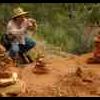
Capitalism, private property and sociopathy
thelerner replied to blackstar212's topic in The Rabbit Hole
I can't tell if this is sarcastic. 'Fun' is bad, a luxury and hedonistic? No, it makes life worthwhile and keep us sane. And young. It can be overdone, but imo, its a necessity of life, and when we lose our spirit withers. My friend toured Russia in the 1980. I asked him what it was like. He said 'Gray, everything was gray, the people, buildings, clothes, the faces and expressions-gray. It was like living in monochromatic world.' Hopefully the internal life was better and brighter, but Communism had a brought about equality by making everything the same.. and sad. In communism, conformity ends up required. A very pure form of communism was practiced in Israel, on Kibbutz. Generally collective farms, Some of these were very purely Marxist. Children were group raised, no money, group planning, everyone according to there needs. Most of the extreme ones failed. Maybe not the first gung ho generation, but later on their kids who worked more and accomplished more, wanted more. A brilliant kid who wanted to become a writer, was told, that was silly, it doesn't put food on the table. He loved the Kibbutz, but left to pursue his dream, and became a famous writer. Many othere followed because they didn't want what the group wanted. They wanted more freedom. There are still Kibbutz but most of them are less strict and pure then the originals. In one word Freedom. Speaking of voting with your feet, you can volunteer for a Kibbutz and get room and board and food, in exchange for work, hard work. See what a very communist system is like. Or there are Communes, but many bright eyed new comers are amazed at the very hard work it takes to sustain a farm. -
Another way is the direct path - Self Inquiry. Ask constantly "Who am I?" and trace back to the source of that question..."Who asked that question? Who is seeking the answer?" Every time a thought arises, ask "Who am I?" Even when we start down this path in a mechanical basis, eventually one day the reality becomes apparent. All it takes is a minor adjustment to remember to do this as a practice all the time. This will eventually spill into sleep/dream time as well...
-
Phil, wonderful spiritual guide teaching via your dream! Ancient systems are weakened via innovation by those students who have not reached a high enough state of consciousness to really know what they are doing. The current state of world conditions reflect this when daily meditation of ancient cultures long ago became ineffective because the correct way to meditate was lost when later generations changed things around. One of my qigong teachers told me that only someone experiencing a very high level of Qi can ever create an effective qigong method. The last step of the teaching, Ri, is fascinating because it is saying that when you reach the level of Ri, your state of Consciousness is so high that you are spontaneously living and acting according to the Laws of Nature and therefore you do not make mistakes. So for someone in less than that state of consciousness to be innovative with a system from a long lineage to tamper with it, just has not made much sense to me. I come from a tradition of masters from the Vedic tradition that is safeguards the methods so carefully that when we were training to become teachers of this method, we could not change even one word in some of the teaching methods or else we would not have been allowed to be initiated as instructors. So if I qigong method is too difficult for me, I just drop it rather than make it easier to do. The benefits are not known when we change things around. Just my way of looking at this. But I understand breaking movements downs, that is how I learn them rather than trying to do the whole form over and over again. I master small parts of it and then I can follow along with the whole form.
-

Difference between SP or REAL DEMON POSSESION
goldisheavy replied to Mak_Tin_Si's topic in General Discussion
We should be very careful with what we choose to validate. You can be a spiritual person and yet not believe in any spirits or ghosts. In other words, belief in ghosts is not a necessity for a cultivator. It's a choice. Depending on your beliefs, the phenomena you will experience will be very different. If you believe in ghosts you will experience them a lot more often than if you do not. If you absolutely believe there are no ghosts, you will never experience a single ghost -- not even one, and you will never hear a reputable story about one. You might read about one, but it will always be from some source of ill repute. In other words, ghosts will not be real to you. But if you believe in ghosts, you will eventually find good evidence, pictures and sources of high repute corroborating your belief. So one should be very careful with one's own beliefs. This is why I always urge people to question everything they believe, because MANY beliefs we have are harmful to our own well-being. In other words, we are our own worst enemy. We often believe things like "I can never succeed" or "I will never be like Lao Tzu" or like "I am too stupid to understand Dao" or like "Ghosts are real, and I have bad luck with them" and so on, and these beliefs can bring significant suffering. This suffering has the nature of a nightmare. It's not real at the ultimate level, but while you are in the grip of the nightmare you believe it's real and it produces real suffering. If in the middle of a nightmare you KNOW you are dreaming and you KNOW it's just a visionary empty experience, it no longer has the power to cause suffering, and in fact, you can even enjoy it. That's how one time there was an entity that grabbed be in my dream and tried to choke me to death. It was strong, it was jumping up and down, and then it jumped together with my body from 2nd story window, slamming me into the ground and choking me in the most violent manner you can imagine. However yours truly knew it was a dream, and I was relaxed and happy, and I was laughing very hard as this vision was progressing. I had absolutely ZERO fear and I was actually enjoying very much being flung back and forth. It was like a carnival ride. Very fun! I woke up very happy and thoroughly well rested and had great mood for the day and a wonderful story to tell. However, if I didn't know I was dreaming, the same dream could become embedded in my mind as a fearful memory and if I dwelt on that memory one too many times, out of fear, it could even re-manifest again and again and keep tormenting me any number of times. This is why if anything attacks me in my dreams I either tear it apart, or I assist in the attack. Like if someone wants to shoot me, I stand closer to the gun and stop moving so that the other guy can get a better shot. If someone wants to cut me in half with a chainsaw, I stand there and press against its teeth. Whatever happens, I am happy and it's all a game in either case. It's important to be able to face these things without resistance. If you can, then resistance becomes a choice and not a necessity, and it becomes playful and not an act of desperation. It can really be fun for some people to believe in ghosts. So I don't want to say "you should never believe in ghosts". However, if you don't like the hassle this creates, you have an option to eliminate ghosts from your life. It's a choice that you should exercise with your eyes open and not just blindly accept it because someone said so and so. -
Before getting into the topic of difference between experience of Self and the actual Self Realization, let us try to understand what is the spiritual effort all about. According to Vedanta philosophy, the spiritual effort is all about identifying our own original Supreme Self within the subtlest core of our personality by giving up our wrong identification with the limited body,mind, intellect and ego that sustains our fallacious and illusory individual personality in the world. The other way to describe spiritual effort is to give up our selfish egoism and egocentric desires of the mind. From this we can easily find out that as long as one keeps talking about an experience of Self, seemingly he / she has still not achieved absolute Self Realization or Samadhi or Mukthi. Lord Shri Krishna when explaining about the state of Self Realization says that it is state of no return, meaning whoever is Self Realized are permanently freed from the bondage of continuous birth and death cycle that the individual Jeeva (Soul) goes through. the state of Self Realization is a transcendental state of consciousness beyond the waking dream and deep sleep state of consciousness. The Kenopanishad gives more proof of authentic Self Realization when the master warns the student that if one thinks that he knows about God or Self Realization, then he does not know about these and he further goes on to say that those who do not know God or Self Realization too know very well about these two.
-
Happens to me all the time (meaning - a lot). The mind interprets this with a sense of foreboding (apprehension that something bad is going to happen) -- but usually does not. I think in some alternate reality, something "bad" really happened following that moment. There is a dream like quality immediately following this. EDIT - Sometimes memories of an entire chain of events following the deja vu flash through the mind. Usually too quickly to comprehend. Sometimes things slow down just a bit.
-
The following is a twitter blog by Pradeep Apte called, "The Parabrahman." It consists of 221 tweets he put together. I've taken the liberty of correcting a few textual errors, and marking some divisions for easier reading. It's posted here in 4 sections... Please quote and comment freely. 1. With the grace of the Guru Sri Nisargadatta Maharaj, who is the “Sadguru Parabrahman”, Parabrahman tweets… 2. Right now, right here, while reading this, you are Parabrahman. The essence of Vedic science can be experienced directly and immediately. 3. As Parabrahman you are always there, yet unseen. Without the Sadguru’s teaching you can never ‘see’ yourself. 4. As these tweets proceed, always remember throughout that Parabrahman, Sadguru and the Guru Sri Nisargadatta Maharaj are all the same. 5. The direct teaching first, if you are spiritually mature enough to grasp it in one or few more re-readings, instantly you are Parabrahman. 6. The Guru says “You are Parabrahman and nothing else”. Accept it with great conviction and all that appears will seem to be palpably false. 7. I am the Parabrahman only! Adhere to this fundamental principle. 8. Accepting the Guru’s words with total conviction can transform your entire destiny, entire life. 9. The deep sense in you that ‘I am’ must accept that you are Parabrahman, not the mind. For that remain focused on the ‘I am’ without words. 10. By remaining focused or meditating on the ‘I am’ you become a witness to it and then, you stand apart as Parabrahman. 11. Only a non-illusory state can know the illusory state. The no-being state is the Parabrahman. 12. Brahman is manifest; Parabrahman is beyond or prior to that. Parabrahman is prior to consciousness or ‘I am’, it means the unborn state. 13. The eternal means: the Unborn. The truth is like that. The eternal is like that. 14. The one who recognizes all these time-bound stages is beyond time, is prior to time. Stay put there as the Parabrahman. 15. When knowing is transformed into not-knowing, that is liberation, you are Parabrahman. 16. Directly realize Parabrahman and finally know that nothing ever came to be. Thus rest in not-knowing with no need to know or read anymore. 17. Rare is the one bestowed with an extra-ordinary spiritual acumen to grasp the truth and realize Parabrahman at once or in a short while. 18. Such rare embodiments of truth, for the sake of the less fortunate ones, elaborate the teachings on Parabrahman as experienced by them. 19. We proceed with the teachings imparted by Sri Nisargadatta Maharaj through his dialogues using the Dasbodh by Swami Ramdas as a guideline. 20. The Dasbodh verse 51/sub-chapter 3/Chapter 8/ forms the very basis of the entire teaching of Sri Nisargadatta Maharaj. 21. “In the attributeless still expanse of Reality (Parabrahman) the inspiration ‘I Am’ arose. This is itself the primal illusion.” ------------------------------------------------------------------------------------------------------------------------------------- 22. Before elaborating on this, just for the sake of a new reader, or even the old one who wishes to brush up his fundamentals – a recap. 23. Knowledge means Self-knowledge where the Self sees only itself. This is called real or pure knowledge or “Jnana”. The Self is Parabrahman. 24. Primarily this means to know God. Knowledge is to reflect deeply upon the Eternal and the ephemeral and know one’s true “Self” (Swaroopa). 25. Nothing is found in the world as pure as Self-knowledge. As long as Self-knowledge is not clear everything is meaningless and useless. 26. The four stages towards Self-knowledge are, the Bound (Baddha), the Seeker (Mumukshu), the Aspirant (Sadhaka) and the Realized One (Siddha). 27. One can judge for oneself at which stage one is, only the One with Self-knowledge, the Siddha, can truly be said to be liberated. ------------------------------------------------------------------------------------------------------------------------------------- 28. Liberation, though a single step, is divided into four stages for understanding only: Swalokata, Samipata, Swaroopata, and Sayujya Mukti. 29. Swalokata means to live in the abode of God, Samipata means to live very close to God and Swaroopata means to appear like God. 30. In Sayujya Mukti one merges with God. It is ‘liberation as complete identification with the Self’, with no traces of any duality at all. 31. Liberation is a single movement of disappearance (of the false self or ego) and no clear boundaries can be drawn between these stages. 32. Understand well that the first three stages are reversible and one can fall back to old ways but Sayujya Mukti in irreversible and forever. ------------------------------------------------------------------------------------------------------------------------------------- 33. To acquire Self-knowledge or Parabrahman, meditation is the only way in which it can be done by the two main-stream teachings: Yoga and Vedanta. 34. In Yoga and Vedanta, meditation is a mental process by which the meditator becomes one with the object of meditation. 35. Concentration (dharana) is the preliminary stage, which when it becomes effortless and continuous takes the form of meditation (dhyana). 36. When the mind continuously flows towards its object, meditation culminates in total absorption (samadhi) in the object of meditation. 37. The sacred texts define concentration as one-pointed focus on any object, internal or external. 38. On focusing the mind uninterruptedly for twelve seconds on a specific object, we are said to achieve one unit of concentration. 39. Twelve such successive units of concentration make one unit of meditation, and twelve such successive units of meditation lead to Samadhi. 40. Concentration, meditation and absorption are the three depths of meditation which culminates in absorption into the object meditated upon. 41. The teachings of Sri Nisargadatta Maharaj and the Dasbodh are essentially of Vedanta, so the Yoga system is only briefly described here. ------------------------------------------------------------------------------------------------------------------------------------- 42. To attain the goal of Self-realization, the Yoga system employs an eight-fold system of practice consisting of eight steps or ‘limbs’. 43. The first five are restraint (yama), discipline (niyama), posture (asana), control of breath (pranayam) and withdrawal of mind (pratyahara). 44. The next three are concentration (dharana), meditation (dhyana) and absorption (Samadhi) already described in earlier tweets. ------------------------------------------------------------------------------------------------------------------------------------- 45. Meditation according to Vedanta is an intense form of worship (upasana) which eventually leads to the direct perception of Parabrahman. 46. The Vedantic practices for meditation are divided into two groups: foundational and structural. 47. In Vedanta, success in structural practices is proportional to the success in foundational practices. 48. The four foundational disciplines are: discrimination, dispassion, mastery over six virtues and intense longing for liberation. 49. Discrimination is between the real and the unreal and dispassion means giving up all desires, whether for this world or the next. 50. Of the six virtues to be mastered the first three are: control of mind, control of senses and withdrawal of mind from sense objects. 51. The next three to be mastered are: fortitude, faith in the words of the Guru and scriptures and concentration of the mind upon Brahman. 52. The essence of the six virtues is self-control, without which the quest for Self-knowledge is an empty dream. 53. Intense longing for liberation is most crucial as its intensity determines the achievement of the goal which is, Parabrahman. ------------------------------------------------------------------------------------------------------------------------------------- 54. The three steps of meditation in Vedanta are: hearing (shravana), reflecting (manana) and meditation (nididhyasana). 55. Hearing is listening to the teachings of the Guru, reflecting is thinking constantly on the teachings heard from the Guru. 56. Meditation is constantly doing the practice (sadhana) as prescribed by the Guru to the exclusion of all other ideas or thoughts. 57. Meditation practiced earnestly without interruption for a long time, with intense love for the chosen ideal, culminates in samadhi. ------------------------------------------------------------------------------------------------------------------------------------- 58. When Samadhi is with effort due to mental disturbances it is savikalpa, when these disturbances are absent it is nirvikalpa. 59. The immersion of the mind in the Self without its complete destruction (manolaya) is Kevala Nirvikalpa Samadhi. 60. With the mind destroyed (manonasa) and remaining permanently in the primal pure state without effort is Sahaja Nirvikapla Samadhi. -------------------------------------------------------------------------------------------------------------------------------------
-
------------------------------------------------------------------------------------------------------------------------------------ 61. There are nine types of devotion (bhakti, worship): Shravan, Kirtan, Namasmaran, Padsevan, Archana, Vandana, Dasya, Sakhya and Atmanivedan. 62. No one type is superior to the others, all lead to Parabrahman and proceed through the four stages of liberation described earlier. ~(#28) 63. The first type of devotion, Shravan, means listening but in present times can be taken to mean reading or any study leading to Parabrahman. 64. Through Shravan one learns about the five elements and the three qualities which make up the eight-fold creation (ashtadha prakriti). 65 The five elements are: Earth, Water, Fire, Wind and Space, each with its group of five attributes that make up the gross world. 66. The three qualities are: Sattva (purity, virtue), Rajas (worldly activity) and Tamas (ignorance, evil), each having a pure and impure form. 67. Through Shravan one learns about the four great statements, the four bodies and four states of consciousness, their origin and negation. 68. The Four Great statements are: Tat Tvam Asi, Pradyanam Brahma, Ayam Atma Brahman and Aham Brahmasmi. 69. The Four Great statements mean: You are That, Wisdom or True knowledge is Brahma, The Self is Brahman and I am Brahman. 70. The Four bodies are: Gross, Subtle, Causal and Supra-causal, which correspond to the four states of Waking, Dream, Deep sleep and Turiya. 71. Turiya means “the fourth”, a sense of pure ‘Being’ or ‘I Am’, on which the other three states appear to come and go. 72. When Shravan is intense one likes to hear or read only about Parabrahman, and then one gets focused on a single statement or word. 73. On meditating uninterruptedly on a single statement or word, it disappears along with the meditator and the wordless Parabrahman remains. ------------------------------------------------------------------------------------------------------------------------------------- 74. The second type of devotion is Kirtan, which means narrating stories of God and Bhajan, which is singing songs of God’s praise and glory. 75. These narrations or songs begin with descriptions of God with attributes (saguna) and end up on the God without attributes (nirguna). 76. The one doing Kirtan or Bhajan builds up a crescendo losing himself completely at the peak and merging into the formless Parabrahman. ------------------------------------------------------------------------------------------------------------------------------------- 77. The third type of devotion is remembering or reciting the name of God (namasmarana), any God that one easily loves can be chosen. 78. One should have the discipline to continuously recite or remember the name God in the morning, afternoon, evening and before going to bed. 79. One should not be without the name of God at anytime, whether in a state of happiness, sorrow, distress, worry or joy. 80. As the reciting or remembering of Gods name grows intense it follows a reverse path through the four types of speech (vani). 81. Speech or vani is one, but only for the sake of understanding has been split into four: vaikhari, madhyama, pashayanti and para. 82. Para means no word, pashayanti means formative or intangible word, madhyama means tangible word or thought and vaikahri means spoken word. 83. When we speak all four vanis are involved and operate as a single unit, in reverse order it’s a movement from the gross to the subtle. 84. In fact Sri Nisargadatta Maharaj has used the ‘vani’ or speech in reverse order (from ‘vaikhari to ‘para’) for going beyond. ------------------------------------------------------------------------------------------------------------------------------------- 85. The fourth type of devotion is Padsevan, which means, serving the feet of the Guru, without whose blessing nothing is possible. 86. Understand that the serving of the Guru is to serve the Sadguru (True master), with body, speech and mind to realize the Self. 87. The Sadguru points to what is true and provokes the thought of discrimination between the True (real) and false (unreal). 88. The Sadguru through his teachings inspires the inner determination with which one realizes Parabrahman, the Absolute Reality. ------------------------------------------------------------------------------------------------------------------------------------- 89. The fifth type of devotion is Archana, which means ritual worship of God as prescribed by the ancient scriptures. 90. The outward worship is usually done of an idol or image of God with different offerings, chantings and prayers. 91. The inward worship (manas puja) is done by closing the eyes and imagining the whole ritual worship in the mind. 92. Archana when done intensely becomes a meditation and leads to loss of individuality, then one merges with God and attains Parabrahman. ------------------------------------------------------------------------------------------------------------------------------------- 93. The sixth type of devotion is Vandana (Bowing) which means bowing in full prostration to God and Guru with deep devotion. 94. By bowing one becomes humble, doubts are removed and bonds of friendship develop with many good people. 95. There is nothing like bowing as it is easy and doesn’t cost anything. When bowing is done, it should be done with complete surrender. 96. On being intense, the devotion of bowing leads to complete loss of ego and one disappears in Parabrahman and is free forever. 97. It is believed that the One who masters the devotion of bowing, develops astonishing powers like even if he bows to a corpse it will come alive! ------------------------------------------------------------------------------------------------------------------------------------- 98. The seventh type of devotion is called Dasya bhakti which is to offer oneself completely at the service of God like a servant or slave. 99. In this type of devotion one does all his work, vocational or other duties, as a service to God and looks for God everywhere in his work. 100. Obviously when this type of devotion is done earnestly one is bound to lose all individuality and dissolve into the Reality or Parabrahman. ------------------------------------------------------------------------------------------------------------------------------------- 101. The eighth type of devotion is called Sakhya bhakti which is to develop a deep friendship with God. 102. One takes delight in this supreme friendship with God and loves him only and thus comes very close to him. 103. God means Atman or one’s own Self, in this devotion one stays with or befriends one’s own Self and never gives it up for even a moment. 104. In the intense practice of devotion of such a type that involves a deep friendship with the Self, attainment of Parabrahman is inevitable. ------------------------------------------------------------------------------------------------------------------------------------- 105. The ninth type of devotion is Atmanivedan which means self-surrender to God, for which one has to know what God is. 106. The scriptures tell us that to know God one has to look within oneself and thus in the quest of God a process of self-enquiry is undertaken. 107. One should find out ‘Who am I?’ Upon investigating what one takes oneself to be, it clearly reveals that there is no individual called ‘I’. 108. When misidentifications are cast off one by one, how can this ‘I’ remain? This is the way self-surrender happens easily. 109. When through discrimination (viveka), everything that is taken to be oneself is discarded, the ‘I’ is clearly seen to be non-existent. 110. When even creation is cast off and only the Self remains, how can any ‘I’ be found there? 111. The one true identity is Parabrahman, the second is creation that appears on it, so where can the third identity ‘I’ come in between? 112. The ‘I’ proved false and with misidentification of the body dispelled, on further investigation, it is seen that nothing really exists. 113. Thus it is revealed that because one takes the ‘I’ to be real, everything else such as the body, world and universe appear to be real. 114. By being the witness, misidentifications disappear, and with the experience of the Self (Atman), even the witness itself does not remain. 115. Only the Self remains in the beginning and the end, so how can there be an independently existing ‘I’? 116. The Self is One, the fullness of ‘Self-bliss’. With the understanding that ‘I am the Self’, where is there any separate ‘I’ remaining? 117. When one investigates ‘Who am I?’(koham?), ‘I am That’ (soham) is the answer and only the Self is seen, so how can any separate ‘I’ exist? 118. The Self has neither qualities nor absence of qualities, is neither dual nor non-dual, being devoid of attributes, how can ‘I’ exist there? 119. When the intellect becomes firm in the oneness of one’s ‘True form’ (swaroop), how can there be any separate ‘I’? 120. Such is the ninth type of devotion called self-surrender (Atmanivedan) which is the satisfaction of the knowledgeable (jnanis). 121. Without self-surrender (Atmanivedan), the cycles of birth and death cannot be escaped. This is a proven truth without any doubt. 122. If the nine types of devotion are practiced, one can gain the greatest ‘Liberation of identification with the Self’ (Sayujya Mukti). 123. Understand that ‘Liberation of identification with the Self’ (Sayujya Mukti) is unchangeable, irreversible and indestructible. ------------------------------------------------------------------------------------------------------------------------------------
-
Ok, excluding RJ..the self proclaimed mastah of Taoist bonk toking and big draws...how many of the TB's smoke weed? I started smoking week as a troubled teeneager..I think I was like 13,14 the first time. It was an amazing and frightning experience. I felt that I was awake in a dream but that life itself was the dream. I kept saying over and over "It's all a dream...it's all a dream." So it was kind of tough to go back to whatever I thought was cool in middle school or high school after that. I would say I basically wasted my high school years on weed and playing video games. I sort of got my act together but then became a near daily pot smoker when I started college. the funny thing I got into meditation, qigong etc. along the way but I still had these weed smoking friends who came around. The last time I smoked was a little over 2 years ago. It was some really good shit. I went outside and looked up at the stars and they were all flying around. In Az you go out and night and you can just see everything. I remember looking at the sky thinking how all the stars are no longer statinary..they can now fly..and maybe the earth is going tos tart flying around to another part of the universe all of a sudden..gravity is no more! So that was it..I know prefer to deal in reality. But maybe some of you have a different opnion of the stuff? I have written posts on the HT board over the years about my experiences wth different drugs. I would say mushrooms(Pscylocibin) would be the one I would deem most spiritual. It was really out of body for me. but I wouldn't ever recommend weed/shrooms to anyone for any genuine spiritual insight. It's insanely fun/dangerous entertainment at best. So what's the general opnion..more or less a waste of time? Fun on occasion.. I am not talking about health here. Health wise it's all crap .I mean in terms of life in general..your outlook and shit..
-
I wrote right there on the bottom about transitioning from dream to the waking state. I think death is a similar transition. We all die everyday. So, there is nothing new in this. No, vivid replay of all previous nightmares put together. We have all lived, slept, dreamt, woke up, died, reincarnated in cycles before. It's just a process. We have done it so many times. In some experiences I know what I was in some previous births. I can state with confidence, there is no such thing as the process you described in detail. This is completely different from one person to another. It is different for the same person from one night to the night, one death to the next...
-
Its like every single dream and nightmare in one's lifetime, all of it gets replayed, only this time there are no gross impediments to filter the vividness. For example, while alive, if a nightmare gets too extreme, survival instinct kicks in and usually jolts a person awake, accompanied by bewilderment for a brief moment. After the body disconnects with the breath for good, there won't be the luxury of accessing any such instinctual support, and what follows in the interim are usually unimaginable confusion and fear, then a period tinged with immense affection, warmth, love, light and so on, with both phases occurring randomly. But the clarity during this period is beyond anything ordinary people will have any recollection or familiarity with. This is one of the reasons why the majority of people have this primordial fear of death - apparently its because of a build-up of frightening memories, over many many lifetimes, of past intermediate (after death) experiences. There are many adepts from different traditions and shamans from all over the world who cultivate what is commonly known as 'death practice', which means they are able to mortify the body to such an extent where death can be simulated. Depending on the degree of their mastery, the intermediate experiences can be recounted, some with pin-point accuracy. There have been books written of a common thread that is shared by all these shamans and adepts insofar as this practice is concerned. I read one years ago, but cannot remember the title now.
-
I suspect the mind interacts without the body in death, much the way it does in dreams. This I think is why the setting and atmosphere of the mind is so crucial for the death transition and why, say the Tibetans for example, put such emphasis and have such broad and deep processes and practices training the mind and dream work. My experiences outside the body are nearly identical to my lucid dreams. My wife's short death experience, (several of the longest minutes of my life), supports this as well.
-
looks like my delusional dream of what I'll soon become
-
you are most welcome i think that visualizing death and really preparing oneself for the eventuality in which they will not have a flesh body, or anywhere to go but into the bardo, is good. To familiarize oneself with the light is what the Bardo Thodol recommends, because a lot of people get "out there" and its like a dream, they are kind of on autopilot.. the great light appears and they fear it, they fear their own dissolution, the unmaking of themselves, and they run from it deeper in to the bardo. They can spend a lot of time in the inbetween, or they can in the snap of fingers enter the light. Some adepts can rest in the light for a long time, bathing in bliss and dissolving samskaras and obstructions effortlessly for ages on end. So if one doesnt go into the light, where the will of divinity itself has a say in what happens to the person, they might go into the other portals into the worlds of gods or animals or to hell, they might, like in a dream, just do it habitually, not even really realizing skillfully that they were doing it as it was happening. So the best thing to do is be prepared to be confronted with an overwhelming light that has the potential to be terrifying because it will dissolve "you" and spit you back out somewhere else. But it is overwhelmingly agreed that entering the light and being absorbed is the best option, and the ticket to several other more interesting options, such as staying in the light for a long time, and being reborn in an enlightened realm like siddhaloka or a buddhist pure land etc. Mark Griffin has an excellent excellent mp3 series on the Bardo Thodol here which is well worth $26.95 (and im poor) so checking that out might prove fruitful too.. i find that the original text by Padmasambhava is a little archaic and confusing, and that Mark's talks might be a lot better for westerners. btw its a 5 part talk, each part is like 70 minutes long
-
I can only respond that the view from here is a bit odd. albeit fantasy, dream , reality, wishful thinking, anger, fill in the blank............................................ failure is fear is and then sometimes not. finding ways to interact and be kind communicating I may find something nice to say and you might cringe--- but I am going to do it and you may reject it. :-)
-
I have been noticing that different people use different tools, through which, they get over, or face their issues and fears. Some of different tools so far I knew about: - The use Lucid dreams through which they face the issue in dream world, - visualization. - The use hypoginia state - NLP (Neuro-linguistic programming) professional or psychotherapist. - The use the present process, in maintaining focus on the now. - observing thoughts. What are your technique to release your triggers and problems ? how it works for you? did you try any other technique ? and you ever wondered that some technique may fall under the "escapism" way or maybe dualistic approach ? Thank you for your time
- 19 replies
-
- 1
-

-
- Meditation
- healing
-
(and 2 more)
Tagged with:
-
which is different from rebirth, which is what ceases upon liberation. so do quantum physicists, but they will still tell you that life is real. yes, people misunderstood the doctrine of emptiness and began to cultivate themselves in an escapist manner. life is illusory, but its not unreal. hows that for better semantics? lol its like a dream.. totally real while you're in it, but then it switches to another dream, and its not real anymore... so its kind of like asking is yesterday "real"? can you show me it? only now is real because we are in it. Right now, the moment you read that last sentence doesn't exist anymore, and won't until you reread it if you so choose. So in many ways, we can see that life possesses an illusory or unreal element. And when its over, we're off to somewhere else, and what we're doing right now won't be "real". So this moment is real, which is why buddhism and the spiritual doctrines recommend resting in it, but thats as far as it goes. There are a lot of illusory aspects to reality.. like the fact that its 99.99% empty space and .01% energy.. another "unreality". So we can agree on the experience of it, but it doesn't mean that things are as they seem. i have no reason to believe that heavens don't exist. They are taught about in all the mystery traditions of the world, other worlds, little worlds, big worlds, faerie, siddhaloka, pure land, it goes on and on... why should i believe that this world is all there is? rather abrahamic. except they believe in heaven too well i can't really claim to know what they meant by that, but there are certainly stories of those who came to human incarnation from other places, places of enlightenment and bliss. I don't really know tho, and yes its different in the tibetan thought. So its hard to pin down "how does this work" i have even seen some people say that enlightenment is the literal extinguishment of consciousness, like upon liberation one becomes like a golem or something! that makes me laugh... i think theres a lot of ignorance out there and some people just want to make grandiose pronouncements rather than find out for themselves by achieving liberation lol aw you dont offend me in the least.. i don't take it personally, and i have seen much worse takes on the dharma and not been offended. I appreciate your point of view, as always, and i appreciate white wolf running on air's. I just understand things differently, and for the sake of our mutual understanding, i chose to respond contrarily to what had been presented. I hope you don't feel chased away by my tone, that would be my mistake, for which i appologize.
-
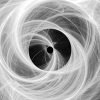
King Arthur - Daoist, Alchemist & Bender
eye_of_the_storm replied to Disabled Not Broken's topic in Esoteric and Occult Discussion
May I ask...anyone... what is the difference between the dream state and this reality? In the dream state I can bend elements as depicted in the avatar series and the like. One I remember vividly was bending water - psychokinesis. Another I was able to harness electrical energy (element?) though this emanated from myself which I directed through my hands. All this seemed quite natural... like breathing. -

What does a psychic attack ( by other human) looks like?
rex replied to qicat's topic in Esoteric and Occult Discussion
Psychic attack can come from energised thought forms attached to physical objects. Edward Bulwer-Lytton's story of a haunted house which affected people and animals very badly, like dying of terror, is a good fictional account, it's called The Haunted and the Haunter; or, the House and the Brain. It can be read in this anthology (page 31) or read as a pdf. There are good descriptions of what experiencing an attack may be like. The severity of symptoms varied depending on the spiritual integration and self-awareness of the individuals. The story ends with finding the energised object: "We found no more. Mr. J---- burnt the tablet and its anathema. He razed to the foundations the part of the building containing the secret room with the chamber over it. He had then the courage to inhabit the house himself for a month, and a quieter, better-conditioned house could not be found in all London. Subsequently he let it to advantage, and his tenant has made no complaints." The salient explanation is quoted here: "What is commonly called mesmerism could not do this; but there may be a power akin tomesmerism, and superior to it--the power that in the old days was calledMagic. That such a power may extend to all inanimate objects of matter Ido not say; but if so, it would not be against nature--it would be onlya rare power in nature which might be given to constitutions withcertain peculiarities, and cultivated by practice to an extraordinarydegree. That such a power might extend over the dead--that is, overcertain thoughts and memories that the dead may still retain--andcompel, not that which ought properly to be called the SOUL, and whichis far beyond human reach, but rather a phantom of what has been mostearth-stained on earth, to make itself apparent to our senses--is a veryancient though obsolete theory, upon which I will hazard no opinion. ButI do not conceive the power would be supernatural. Let me illustratewhat I mean from an experiment which Paracelsus describes as notdifficult, and which the author of the _Curiosities of Literature_ citesas credible:--A flower perishes; you burn it. Whatever were the elementsof that flower while it lived are gone, dispersed, you know not whither;you can never discover nor recollect them. But you can, by chemistry,out of the burnt dust of that flower, raise a spectrum of the flower,just as it seemed in life. It may be the same with the human being. Thesoul has as much escaped you as the essence or elements of the flower.Still you may make a spectrum of it."And this phantom, though in the popular superstition it is held to bethe soul of the departed, must not be confounded with the true soul; itis but eidolon of the dead form. Hence, like the best attested storiesof ghosts or spirits, the thing that most strikes us is the absence ofwhat we hold to be soul; that is, of superior emancipated intelligence.These apparitions come for little or no object--they seldom speak whenthey do come; if they speak, they utter no ideas above those of anordinary person on earth. American spirit-seers have published volumesof communications in prose and verse, which they assert to be given inthe names of the most illustrious dead--Shakespeare, Bacon--heaven knowswhom. Those communications, taking the best, are certainly not a whit ofhigher order than would be communications from living persons of fairtalent and education; they are wondrously inferior to what Bacon,Shakespeare, and Plato said and wrote when on earth. Nor, what is morenoticeable, do they ever contain an idea that was not on the earthbefore. Wonderful, therefore, as such phenomena may be (granting them tobe truthful), I see much that philosophy may question, nothing that itis incumbent on philosophy to deny, viz., nothing supernatural. They arebut ideas conveyed somehow or other (we have not yet discovered themeans) from one mortal brain to another. Whether, in so doing, tableswalk of their own accord, or fiend-like shapes appear in a magic circle,or bodyless hands rise and remove material objects, or a Thing ofDarkness, such as presented itself to me, freeze our blood--still am Ipersuaded that these are but agencies conveyed, as if by electric wires,to my own brain from the brain of another. In some constitutions thereis a natural chemistry, and these constitutions may produce chemicwonders--in others a natural fluid, call it electricity, and these mayproduce electric wonders."But the wonders differ from Normal Science in this--they are alikeobjectless, purposeless, puerile, frivolous. They lead on to no grandresults; and therefore the world does not heed, and true sages have notcultivated them. But sure I am, that of all I saw or heard, a man,human as myself, was the remote originator; and I believe unconsciouslyto himself as to the exact effects produced, for this reason: no twopersons, you say, have ever told you that they experienced exactly thesame thing. Well, observe, no two persons ever experience exactly thesame dream. If this were an ordinary imposture, the machinery would bearranged for results that would but little vary; if it were asupernatural agency permitted by the Almighty, it would surely be forsome definite end. These phenomena belong to neither class; mypersuasion is, that they originate in some brain now far distant; thatthat brain had no distinct volition in anything that occurred; that whatdoes occur reflects but its devious, motley, ever-shifting, half-formedthoughts; in short, that it has been but the dreams of such a brain putinto action and invested with a semi-substance. That this brain is ofimmense power, that it can set matter into movement, that it ismalignant and destructive, I believe; some material force must havekilled my dog; the same force might, for aught I know, have sufficed tokill myself, had I been as subjugated by terror as the dog--had myintellect or my spirit given me no countervailing resistance in mywill."There are more interesting details but I don't want to give too many spoilers.- 23 replies
-
- 4
-

-
- psychic attack
- dao magic
-
(and 1 more)
Tagged with:
-

I hate socially calibrating/trying to fit in
Protector replied to skydog's topic in General Discussion
I thought we already discussed this, OR WAS IT ALL A DREAM? Whose dream, your or mine? If I remember but it does not exist then it must be mine, but does that make it less real for you? Argh confusing, this is like deciding which one is the best pony, Applejack btw -
it strikes me that I have had two dreams in the past week that had deep - (one was a dream within a dream) connections with departed loved ones- in the first, I "awoke" from a long conversation with my departed mom to tell a bunch of folks the good news she offered -(it'll be alright! -I've been financialy troubled of late)- And I awoke again -this time into this plane- feeling safe from dire poverty somehow!! the 2nd was a good friend who was murdered by the KKK and he too said -don't worry enjoy life -but stay safe!!! right after the visit with him I was attacked- (still in my sleep) by an entity that I somehow "knew"- I said in my dream "I know you!!" - Then I just kicked him twice quickly in the throat and woke up from my having kicked the wall as I slept... each an uplifting gift from the other side So I can now relax & enjoy what inner peace I have found... but stay aware of dangers!
-
If you practice Chi Circulating/Building Exercises, and can trace your Tradition or Lineage back to it's older origins, this might be essential reading. If your Tradition/Lineage has Roots in China, Japan, or is part of the Egyptian Mystery Schools... the Nagas/Serpent are deeply embedded and saturated through out it's core. It is widely encompassing. It is Ancient &... Celestial ---------------- Also, take into account, the following Article I wrote: Egregores: An occult concept representing a "thoughtform" or "collective group mind", an autonomous psychic entity made up of, and influencing, the thoughts of a group of people. The symbiotic relationship between an egregore and its group has been compared to the more recent, non-occult concepts of the corporation (as a legal entity) and the meme. dao-jones.blogspot.com/2012/08/egregores.html ---------------- What follows is research from many varied sources I collected over the years, as a Magickian. It certainly is not the definitive, final word on the matter, and the sources are not exhaustive. However even if only 50% of this is accurate, it still has to make a thinking person, wonder... ---------------- Sumerian accounts tell of flying serpents and dragons breathing fire and how the kings of Sumer, going back long before the deluge to some 240,000BC, were "changelings" seeded by the union of the gods and humans. Sargon the Great, that famous ruler of the Sumer Empire, claimed this genetic origin and the very existence of "kingship" is reported very clearly to have been a gift of these gods. Equally clear is that they were reptilian gods, as in "The reptiles verily descend". And there are many references by the Sumerians to their gods as fiery, winged, serpents. The term U-SHUM-GAL, often used to describe Enki, translates as flying, fiery, serpent, The Indian epic, the Ramayana, tells the story of the serpent-god called Ravan who went to Ceylon. Ravan was said to feed on humans and drink the blood of his enemies Ceylon was a major centre for the serpent race, it seems. Ancient Chinese sources say it was a home of the Nagas, the "strange reptilian-like creatures", as they described them. They are reported to have traded with the Chinese, but interestingly it is said that they never revealed themselves. They left their products and a price tag, but stayed out of sight until the Chinese traders had departed." The entire culture of China is based on the dragon and serpent race. Here was a highly developed civilization thousands of years ago that influenced by the Sumer Empire. Even today their languages and writing are remarkably similar, as are their myths and stories. The great age of Chinese culture is reckoned to have begun around 2800BC -when the Sumer Empire was in full swing. Chinese history says that the first humans were created by an ancient goddess called Nu Kua, who was half dragon and half human. The Yih King, a very ancient Chinese book, says that the dragons and humans once lived in peace and that they intermarried and interbred. Ancient Chinese emperors were described as "dragon-faced" and looking like the dragon gods. Japanese emperors claim descent from these same "gods" and their ancient legends say those islands were populated by beings that came from the sky. The ancient Chinese believed that a dragon fathered the First Dynasty of "divine" emperors, and subsequently emperors claimed their right to rule because they were descended from the serpent gods. Their thrones, boats, and beds were designed with dragon symbolism. The ancient Egyptian accounts known as the Pyramid Texts speak of the serpent being both subterranean and celestial. Stories of flying serpents can be found in Egypt, as you would expect of an important colony of the Sumer Empire, and, once again, they symbolized immortality. Flying serpents were pictured taking the kings to the land of immortality in a star constellation in the heavens. One serpent symbol was the divine asp on the headgear of Egyptian kings and they used the fat of the crocodile in their coronations. The great ancient Egyptian city of Alexandria was called "City of the Serpent's Son" (Alexander the Great) and there they worshipped the serpent god, Serapis. He was known as the "Sacred Serpent" or "Fire Serpent" and from this comes the Biblical "Seraphim", the serpents associated with Yahweh/Jehovah. As a "serpent" colony, you would expect to find pyramids in China, and you do. One was some 1,000 feet high - twice the height of the Great Pyramid at Giza. This was encircled by others and some still survive today, including what is left of that monster structure. References to them have been found in Chinese texts dating back 5,000 years. The Chinese name for the ley lines or meridian lines of the Earth energy grid is dragon lines. Appropriate and understandable given that the reptilians exploit the energy in this grid, and built temples and structures at the major vortex points. Meridians mapped on the human body has it's origin here. In the Mahabharata In the great epic Mahabharata, the depiction of Nagas tends toward the negative, and they are portrayed as the deserving victims of the snake sacrifice. The epic frequently characterizes Nagas as having a mixture of human and serpent-like traits. Sometimes it characterizes them as having human traits at one time, and as having serpent-like traits at another. The nāgas also carry the elixir of life and immortality. Thailand Traditions about nāgas are also very common in all the Buddhist countries of Asia. In many countries, the nāga concept has been merged with local traditions of great and wise serpents or dragons. In Tibet, the nāga was equated with the klu, wits that dwell in lakes or underground streams and guard treasure. In China, the nāga was equated with the lóng or Chinese dragon. The Buddhist nāga generally has the form of a great cobra-like snake, usually with a single head but sometimes with many. At least some of the nāgas are capable of using magic powers to transform themselves into a human semblance. In Buddhist painting, the nāga is sometimes portrayed as a human being with a snake or dragon extending over his head. One nāga, in human form, attempted to become a monk; when telling it that such ordination was impossible, the Buddha told it how to ensure that it would be reborn a man, able to become a monk. Prajnaparamitaterma teachings are held to have been conferred upon Nagarjuna by Nagaraja, the King of the nagas, who had been guarding them at the bottom of a lake Nagas also referred to themselves as "Arya" or "noble". Nagarjuna, as the champion of Buddhist philosophy is traditionally portrayed with a sunshade or halo formed by a multi-headed serpent. He is called the Second Buddha, partly in tribute to his having established the Madhyamaka [Middle-Way, ie. neither materialist nor nihilist nor idealist] school of philosophy As there are serpents in Tibet, and nagas called Lu play a role in the symbolism of Tibetan Buddhism and in Tibetan mythology, so Nagarjuna is known as Lu-trub. The traditional life-story [Tibetan: namthar] of Niguma, the female companion of Naropa, begins during the time of one of the earliest Buddhas in a region covered by water ruled by a great Naga King. This Naga was an accomplished and compassionate disciple of that Buddha and gave his permission for the miraculous drying up the water for the purpose of erecting a great temple and monastery. A bustling city grew up around these which acquired a certain reputation, and came to be called The Land of Great Magic. This is the place that Niguma was born. Niguma developed the powerful tantric techniques referred to as the Five Dharmas of Niguma. The best known is called the Dream Yoga of Niguma. Her disciple, Naljor, is considered the head of the Shangpa Kagyu denomination of Tibetan Buddhism. Many examples of the naga association with Buddha appear on the walls and along an avenue leading to the temple of Ankhor Wat in Kampuchea (formerly, Cambodia) and also in Buddhist temples in Shri Lanka (formerly, Ceylon.) Kundalini depiction?... The serpent king Vasuki helped the gods to recover amrita, the elixir of immortality, from the Ocean of Milk by serving as the cord they wrapped around Mount Mandara in order to churn up the depths of the ocean. (Book I: Adi Parva, Section 18.) The Buddhist nāga generally has the form of a great cobra-like snake, usually with a single head but sometimes with many. At least some of the nāgas are capable of using magic powers to transform themselves into a human semblance. In Buddhist painting, the nāga is sometimes portrayed as a human being with a snake or dragon extending over his head. One nāga, in human form, attempted to become a monk; when telling it that such ordination was impossible, the Buddha told it how to ensure that it would be reborn a man, able to become a monk Among the notable nāgas of Buddhist tradition is Mucalinda, protector of the Buddha. In the Vinaya Sutra (I, 3) the Buddha shortly after his enlightenment is meditating in a forest when a great storm arises, but graciously Naga King Mucalinda gives shelter to the Buddha from the storm by covering the Buddha's head with his 7 snake heads Then the king takes the form of a young Brahmin and renders the Buddha homage. It is noteworthy that the 2 chief disciples of the Buddha, Sariputra and Maudgalyayana are referred to as Mahanaga. Some of the most important figures in Buddhist history symbolize nagas in their names such as Dignaga, Nagarjuna, and Nagasena. Huang-Ti or Huang-Di or the Yellow Emporer, is a legendary Chinese sovereign and cultural hero who is considered in Chinese mythology to be the ancestor of all Han Chinese. He was one of the legendary Five Emperors. He was mentioned in the Shiji by historian Sima Qian (145 BCE-90 BCE). Tradition holds that he reigned from 2697 BC to 2597 BC. He emerged as a chief deity of Taoism during the Han Dynasty (202 BCE-220 CE). He lived until the age of 100. Some legends say 400. He was said to have been born with a "dragon-like countenance" (looked like a dragon) It was claimed that he was conceived by a ray of golden light that entered his mother's womb from the Big Dipper constellation. The Big Dipper includes the star Alpha Draconis, the star of Set in Egypt. One Chinese legend says that when he died Huang Ti transformed into an etheric dragon and flew to the realm of the immortals. In China underground bases where the Dragon Kings live are referred to, as well as the lineage of humans from a race of 'Dragons'. ---------------- The ancient Chinese held the snake in great awe. This was shown by the fact that the ideogram for "it" is a striking cobra - "snake" itself is "worm" on the left and "it" on the right. Even in Tang times, "no it" was used to mean "safe". Reptiles were assumed to know the seasons, since they hibernate during winter and emerge in spring when humans need to plant crops, and the lines on the turtle's back were thought to be some divine diagram related to bagua, eight symbols corresponding to 1-8 (not 0-7) coded in binary, each placed as a side/corner of the compass diagram. (This is used on the national flag of South Korea, with yin-yang symbol.) Snakes were also thought to represent fertility - and turtles longevity - as well as to be related to lightening and tornadoes - which are even today called dragon rolling winds, a dragon with its tail touching ground and head in the sky, demonstrating its supernatural power. The tribes even scientifically concluded that dragons hibernate on earth during winter and rise into heaven in spring to throw lightening and thunder in summer. Further adding to the awe, snakes often live in graves, where they drive away rats that might otherwise damage coffins and corpses, thus hinting they were guardian spirits for people's ancestors. In particular, there are a number of things directly connecting snakes to the Xias: the name Yu meant "reptile"; his father is said to have turned into a bear/dragon/turtle after being banished by King Yao (but the father's name Kun is related to fish, indicating an earlier alliance of the fish and snake tribes arising from tribal migration; the bear/dragon/turtle is said to be three-legged, which has something to do with the sun golden bird being three legged but obscurely; the ancient ideogram for Yu is basically "it" with legs, perhaps a monitor lizard or, widening a bit, crocodile (another school of thought says it is actually two hands holding a snake;) one story says he emerged from his father's dead body - possibly due to some reptiles giving birth to live young rather than laying eggs. An alternative theory was a succession ritual in which the new chief kills the previous chief as a sacrificial offering to the gods - the "killing" or "live birth" might both be symbolic rather than physical, but there was a Tibetan ancient custom to kill the reigning king when his son reaches 13, probably a way for the tribal shamans, who proclaimed each chief and ruled with him, to maintain power through a juvenile puppet, pretending that the previous king, a god, had returned to heaven. Since one school believes that Kun/Yu were descended from the western White Horse Qiang tribe that originated near Tibet and moved east, the practice of regicide may have been real, not symbolic. The legend of Yellow Emperor riding a dragon to heaven sounds suspiciously similar, as does the chant recorded in the Classics of Mountain and Sea - Right after Zhuanxu dies he revives, hinting at a ritual involving the tribal chief requiring him to demonstrate superhuman capability, or possibly reincarnation in the new form of his successor. The story of Yu's son Qi obtaining nine verses from heaven probably involved a similar "go to heaven and return" ceremony. Even in the Warring States period, there was a legend of the ruler of Zhao State waking up after a long sleep claiming to have been up in heaven during the coma and a suspiciously similar one relating to the Lord of Qin about seeing the White Emperor (usually identified with Shao Hao from which Zhao and Qin both claim descent) in his dream during a long sleep. Some additional tidbits: There used to be an ancient ritualistic dance called "Yu steps" involving hopping with ankles touching, in imitation of the cobra's movements; and a few Xia legends exist concerning raising/riding/eating dragons, which shows a continuation of reptile/dragon legends passing down a succession of ruling chiefs from long time past. The stories often mention the chief wore "snakes on his ears", which may be related to the jade slit rings often found in ancient tombs. The parable of snake swallowing elephant hints at an expanding reptile tribe group conquering tribes with other totems. The name Chi Yiu is also related to reptiles: Chi is worm with a crown, and Yiu is a crawler form, but this time the reptiles were conquered. It appears that the tribe was mostly enslaved, but remnants escaped southwards to become the modern Miao and Li minorities, who even today retain some forms of snake worship or dragon legend. However, the spread of the reptiles seems to have started long before. A study of place names containing the word dragon or some close variant, or relating to personalities of the dragon worshiping tribes, and native legends and worship practices, indicates that the tribes originally arose in eastern china, consisting of a senior snake branch and a junior bird branch, but parts of the snakes moved west, south and north. In the west it merged with the farming/ fishing tribes on the Yellow River banks near Hua Hills, probably explaining the fish-dragon pottery figures and various legends of the golden carp jumping up the cataracts to turn into the dragon, as well as the horse/bull headed dragons seen in later graves. This appears to be the origin of the Divine Cultivator tribe, (whose name Shen Nong probably was originally Shen Long, Divine Dragon) part of which settled south of Yellow River later as the Zhuyong tribe, and part north of the river as the Gonggong tribe. It continued to spread to Shanxi to form the Xiyue (West Hills, often confusingly written as Siyue or Four Hills) tribe, which then further divided, producing among others the Curled Dragon tribe in which the name Hou Ji, supposedly the founder of the Zhou tribe, in some way figured. Also, one of the wives of Yellow Emperor was from the Pink Fish tribe, and another wife was from the tribe Xiling which also means West Hill, and Emperor Yan was supposedly conceived when lightening and a dragon's shadow struck his mother near Hua Hills. The Shen Long tribe had a marriage alliance with Ben Shui or Running Waters tribe, again showing a link to traditional fishing tribes. This appears to be the origin of the legend of Fuxi's daughter marrying the river god and becoming the goddess of the Luo River. (Another story says Emperor Yan's daughter drowned at sea and turned into the Jinwei bird, which keeps throwing pebbles into the water hoping to fill it to avenge her death, which sounds suspiciously related: a girl gets drowned and ends up with two legends, marrying river god or taking divine revenge. In another version, she came back to life on the mulberry tree but refused to come down, and flew away when Emperor Yan ordered the tree to be burnt. There is in fact a third related legend which will be discussed in Section 7. The drowning story may also reflect in part a ritual of virgin sacrifice to pacify the river god.) The tribe also made some further movement to the Shaanxi Wei river area and Gansu Long(dragon) Hills area, from which came the Zhou-Jiang alliance that ruled after the Shangs, and the nomadic Di-Qiang tribes that invaded northern China after the Three Kingdoms/Jin Dynasty periods. The name Di means "bottom" or lowland, hinting that they farmed instead herded; it appears related to the Zhou family name of Ji, while Jiang and Qiang are just the same word written and pronounced differently, and were derived from the ideogram for goat showing their nomadic origin. As mentioned earlier, some of the Qiang tribes may even have migrated eastward earlier, giving their chiefs Kun and Yu the opportunity to marry into local tribes in central/eastern China and even leading them. In the south the dragon/reptiles merged into various native hill tribes, though archaeological discoveries so far do not yet fit a coherent chain of inheritance. But the shape of the modern dragon appears to have been acquired starting in southern Manchuria, with the snake merging with mammals and birds acquiring horns, claws, sometimes wings, and in this augmented form becoming the ritualistic emblem shared by all the tribes coming under a common alliance. It is clear that, while ancient China had warmer climate than today, Manchuria was not a place where turtles and snakes could prosper. The people must have moved there from somewhere further south, perhaps before Yellow River started flooding because of silting (caused, as a matter of fact, by forest loss and soil erosion due to the farming of the Hua Hills people.) The later floods then cut their southern route and they began their own path of development. That they were linked to the eastern China tribes was shown by important people being buried with jade turtles in both hands, indicating that they too used turtle shells for divination. Quite possibly they later moved south again, became more martial, and conquered or merged with the Hua Hills people to emerge as the bear/chariot rider/Yellow Emperor tribe. Back in eastern China, the remaining reptiles and birds both intermixed and fought. Besides the Chi Yiu battle, in which Yellow Emperor appeared to have received some help from the birds, legends describe a series of monsters killed by Hou Yi the archer, probably indicating the bird tribe, skilled in making bow and arrow, defeating tribes with various animal totems, including the Ba snake. His tribe probably absorbed nine other bird/sun worshiping tribes, explaining the legend of his shooting down nine suns (which are golden birds). The 10 original tribes were supposed to have arisen from the organs of Nuwa after her death, a story which may later have transformed to the cosmic origin story of Pan-gu creating the world and its various objects. There was also a struggle for the throne between Gao Yang and Gonggong the water demon, who avenged his battle loss by smashing a column holding up the sky with a head butt (the broken sky was supposedly repaired later by Nu Wa - the story might reflect an earthquake/volcanic explosion leading to a mud/lava slide that blocked a river causing extensive flooding), and Yu's father stealing the magic soil from Gao Yang's store in heaven to build dykes and fight floods, resulting in his execution by Zhuyong the fire god. This has been variously interpreted: he was ordered to solve the flood problem and was blamed for failure, or he was expanding his territory into land reclaimed from floods without getting permission to do so (unauthorized use of divine soil - possibly a migrating tribe encountering opposition from current occupier). Other stories from minority tribes talk about a chicken taboo violation, a fearsome, human eating dragon woman killed by her victim tribe, and in a Manchurian version, a tribe seeking revenge for the death of a girl married into the neighboring tribe, in each case resulting in a war between the neighbors. Possibly the reptiles, more experienced with water and dykes, had a history of using flooding to defend themselves like the Dutch, and destroyed some enemy tribe or even their own relatives, intentionally or accidentally. In any case there was some sibling conflict that caused great destruction as well as permanently dividing the reptiles into different camps. Yu's actual hydraulic works, whether for flood relief, territorial expansion, or judging from the Ancient Book chapter, for river transportation, present yet another flood story probably occurring later still. From the history writers' judgement and the ethnographic spread, the "good reptiles" intermixed with other animals, producing the dragon, while the "bad reptiles" stuck to the plain snake, and were driven south into the swamps and hills. Whereas the "good reptiles" made sophisticated legends about their originating chiefs Fu Xi and Nu Wa, crediting them with various inventions, even repairing the broken sky, the "bad reptiles" merely believe the brother and sister survived the floods and married to produce descendents. In a very real sense, the dragon represented the mainstream of Chinese cultural development, since those believing in it also developed various other cultural artifices, while those who stuck to the snake remained primitive. The history of Chu state, which claimed descent from Zhuyong, says however that he was himself executed by Gao Xin for poor military performance against Gonggong. There is a further confusion between Zhuyong and Zhong-Li, the grandson of Gao Yang ordered to carry out the separation of heaven from earth, as well as separate persons Zhong the fire chief and Li the farming chief, and an alternative story in which Zhuyong was on the opposite side, actually a descendent of Emperor Yan and the father of Gonggong, who helped Emperor Yan to fight Yellow Emperor and Gao Yang in several wars. Maybe Gao Yang's claim of exclusive right to worship heaven caused a tribal rebellion among Zhuyong/reptile tribes, with some joining and others opposing? Despite his connection with the Gao Xin bird tribe and Emperor Yan bull/dragon, the name Yong contains the ideogram for "worm" indicating Zhuyong's descent from the reptiles, and explains why he is Gonggong's enemy in some stories and family member in others. The name Li is particularly significant: Chi Yiu's tribe is named Nine Li, and an expression used even in Zhou times to refer to ordinary citizens was Li Min. Possibly, Zhong and Li were sent to take charge of various parts of the bird, reptile and Emperor Yan tribes, resulting in the use of the name Li to refer to the southern tribes. The eight tribes of Zhuyong and the eight tribes descending from Gao Yang used the same set of surnames, indicating probably a migration, due to floods perhaps, from north of the Yellow River to the Chu territory on the south. Somewhere along the line they changed from dragon to phoenix as their totem, leaving trace in the legend of snake turning into bird. Their former territory was then taken by the Gonggong-West Hills tribes from the west and by bird tribes from the east, while they themselves took over the southern land of the Emperor Yan and Fuxi tribes that had already moved west. In our attempt to unravel of the confusing stories of the eastern tribes, it is also possible to pin something on numbers. What is the relation between the nine Li tribes of Chi You and the eight tribes of Zhuyong who is also known as Zhongli and his people (probably) the Li Min? If we imagine that one tribe, directly ruled by Zhuanxu-Gaoyang, was allowed to worship heaven, while the other eight were only allowed to pray to lesser divinities, we see a separation between heaven and earth. The eight tribes then rebelled or ran away southwards, both of which have evidence in the legends. Making something of names, Zhuyong's brother is called Wu Hui, which may be the same as Gonggong's alias Yonghui, and Wuhui's son was Luzhong, whereas Huilu happens to be an alias of Zhuyong. So there is a lot of family relations all confusingly lumped together. There was even a guardian demon of the Kunlun hills called Lu Wu, and a the astronomer/divinator of the Zhuanxu was named Kun Wu. It seems no coincidence that Zhongli and his descendent Xihe were both the astronomers as well as the fire chiefs; It was simply a job reserved for their clan whose members pass down these mysterious skills generation by generation, with different individuals doing the work in different generations, all confusingly linked together. Sima Qian's history says the Chu royal family descended from the Jiang tribe on the maternal side so that the Jiang pedigree from Emperor Yan got mixed up with the Gao Yang pedigree. But it is also possible that Zhuyong, meaning "fire priest", was just a generic name, not belonging to a specific person. It can even be that "Zhuyong killed Yu's father Kun" and "Zhuyong was Emperor Yan's helper in the war with Yellow Emperor" merely meant "fire was used to kill", whether in ritual sacrifice or in actual fighting, with some ceremonial invocation of the powers of the fire god. Taking all the confusing stories together, there is a recurring theme of central authority against reptile defiance. Several southern chinese minority tribes have a somewhat similar disaster legend in which the thunder god (akin to Gonggong) started a flood to destroy his brother's tribe, killing everyone except a brother-sister couple (akin to Fu Xi/Nu Wa) who ensured the continuation of the tribe (repaired heaven). Since the pair already understood that male-female sex was responsible for fertility, not totem worship, the disaster's occurrence could not have been very ancient. Whether a flood was the cause of the westward migration of the snake worshiping tribe (with the brother sister pair somehow getting left behind) is hard to tell, though the Classic of Mountain and Sea does have mysterious passages like "heaven turned water fountain, and snake turned into fish" which hints at this, but the migration must have occurred at least several hundred years before the war though it is hard to separate the two sets of flood stories and figure out which is which. It is also necessary to note that the name Xi refers to the sun, and various features of Nuwa indicates she was the moon/fertility goddess, so that their sibling relation may be really a cosmic legend, and the flood survival/tribe regeneration story can be just a mythical invention to explain incestuous human origins. (A possible connection with the Old Testament is discussed in the following section.) Two curious stories about Yu's wife hint at Xia's origin: He turned into a bear to dig canals with paws, and she was embarrassed enough to run away and then turned into a stone, but opened up to return his son. An apparent explanation is: he was born in the Yellow Emperor "have bear" tribe and married into the reptile tribe, but later was expelled; when he left he took his son, instead of letting the boy stay with the maternal tribe as was normal in a matriarchal society. The birth from stone story is also related the worshiping of stone fertility symbols in some obscure way. Yu was supposed to have started the practice of father-son succession, thus completing the transition to a patriarchal system, but the reptile totem from the mother's side remained with the descendants, and even got retrospectively attached to ancestors in later stories. The legends also say that Yu ignored his son's birth while rushing about with his work, which would however be just normal in a matriarchal society where the mother's tribe brought up the children and the father was just a peripheral figure. The son cannot inherit from the father in a matriarchal system because the father has no property in the mother's tribe while property from his own tribe must pass to its own members. Qu Yuan's poem asks "why did Qi (Yu's son) kill his mother?" reflecting a conflict between his and his mother's tribes over succession - his opponent Yi was the son of Chief Justice Ji Tao and assistant to Yu, whose descendents later became the Qin and Zhao clans that formed two of the states of the Warring States period. Since these two clans' legend of origin was the swallowed egg, Yi was also associated with some bird tribe, perhaps through marriage. Yi was credited with teaching tribes to dig wells, which may have been the real achievement of Yu and company, since tribes could then live further away from riverbanks in locations less likely to be flooded, and could build settlements in places where access to water used to be a problem. Wells have been found in 7-8000 year old settlements in eastern china so the "invention" might just be Yi bringing the knowledge westwards. Yu's father is said to have tried to block floods unsuccessfully by dyke building, and Qu Yuan's poems mention "As he did flood work, the owl and the turtle were joined", which appears to mean that tribes with reptile and bird totems worked together under him. Yu changed the method to cutting outflow channels which was more successful. A less well known story mentioned in a few books about the father was he built city walls and stored treasures/weapons inside, causing other tribes to be suspicious and rebellious; then Yu pacified them by razing the walls, burning the weapons and distributing the treasures. Whether building dykes and walls were two separate stories, or the same story that somehow developed two versions, is too obscure to tell. Perhaps flood relief was just a metaphor describing a philosophy of government, but was somehow taken for real, though a reverse mix up is equally possible. Again taking things literally, if the reptiles, seriously threatened by flooding, obtained help from their traditional bear-bird enemies, one could understand that the alliance would have been turbulent. The Machurian goddess temple mentioned earlier also had fragments of a bear-dragon statue and a bird of prey statue, confirming that there was already a mixing of the bear-reptile-bird totems occurring in 3000BC, with both eastern china tribes (reptiles and birds) and north-western tribes (bears and other mammals - besides the Divine Cultivator tribe bull totem, tigers and leopards were said to have fought Chi Yiu under Yellow Emperor; there was no mention of the goat however, so Jiang-Qiang was absent) intermingling in Manchuria. Some Hua hills pottery shows a bird catching fish motif, and southeastern sites yielded numerous jade carvings with a combination figure that is both a bird-man wearing a big feather hat perching with open wings covering two round eggs AND a monster face with hair (feather hat), thick brow (wings), big eyes (two eggs), goatee (claws), etc, again hinting at a tribal mixing. The monster face also relates to a legend about Emperor Yan's follower who continued to fight after his head was chopped off, using his nipples as eyes and navel as mouth, which was probably a burial ritual for headless fighter corpses. A similar monster face called the taotie appears in later Shang bronze vessels, sometimes with a human head in its jaws, probably a guardian animal eating a demon. Zhou books mention a greedy monster with the same name, which appears to be their guess of its meaning. The two eye-eggs could even represent testicles, and the whole figure a fertility sign. The feather hat appears to relate to the "descent of the phoenix" described in the Yao section of Ancient Book: after nine verses have been played, the tribal chief dressed as the phoenix appears, to be worshiped by vassals dressed as various totem animals. The phoenix later lost out to the dragon however, and was reduced to a symbol representing high class women. While an important tribal and shaman emblem, the dragon was merely on par with the tiger and the phoenix at first. A person like Zhuge Liang could be nicknamed "crouching dragon" without risk of censure for lese majeste. It was much later that Imperial China elevated the dragon into a royal monopoly and standardized its appearance, with five claws. By then its origin had disappeared into historical mist, and we can only catch glimpses of it by strenuous efforts delving into the ancient manuscripts and archaeological evidence. ---------------- Etymology: The word ''Naga'' Means "Serpent" in the Vedic Sanskrit. The Hindu Naga Serpent Gods of India are mention in the "Upanishad Texts", Nagini for the feminine. Indian Serpent Ruler, son of Kadru The Nagas ruled India as well as a substantial portion of Asia from Arabia to China and the South Pacific, as well as the Indian Ocean region.There are a few definitions of the Naga but the origin is the Naga serpent, or the Naga's a race of serpent like people from Hindu and Buddhist mythology. The word Naga comes from the Sanskrit and 'nag' is still the word for snake, especially the cobra, in most of the languages of India . The Naga is referring to the people who have full access to the Kundalini energy. Kundalini being a serpentine force, to be honored with being called a Naga is to be wise as the serpent. Matthew 10:16 verse "Be ye therefore wise as Serpents, yet gentle as doves." Note that the Snake (Serpent Spirit) has been a symbol of wisdom since the metaphysical story of Adam and Eve. It's the wise Serpent who offered them the fruit of knowledge. Also attach to the wise Nag serpent is eternal healing, mystery, magical power, and holiness throughout most of the ancient non-western world.It's the represents the power of life death resurrection. It's used in everything from sex potions to drugs to kill cancer, life and death. .Its poison can kill and used to heal, is shed its skin as a symbol of resurrection. It's a symbol of all the four elements water, air, earth and fire. The wise serpent lives in water and also in the earth, the poison is fire and the movement in "S" form is the same way waves move across air. Its symbol is used today in medical field. Other words related to the 'Naga' or' Nag': Naga-raj: King of cobras Naga-rjuna: A Baudha Saint Nag-eena: Gem of Ring, Diamond, great Nag-endra: Lord Shiva Nag-esh: Lord Shiva, Lord of snakes Nag-mani : Lord Krishna, Snake's Gem Nag-pal: Protector of Snakes Nag-pati: Master of Snakes Nag-raj: Sheshnaag, Snake king Nag-ulan: Witty Nga: (Naga) which means "Serpent Queen." It is a title of the Egyptian Queen; this title was given to those who have mastered the Uraeus power. When you see an Egyptian headdress which has a snake on the top of it, you are looking a Uraeus crown. Seen in most hieroglyphs as an upright form of an spitting cobra, used as a symbol of sovereignty, royalty, deity and divine authority in ancient Kemit. Uraeus is obvious reference to the Kundalini energy. Naga-saki: A Japanese city destroyed by an atomic bomb in 1945, by the U.S. and it means"Serpent Spirit" or "Serpent Life-Force." Nig-gina: is the Mesopotamian word for "Justice." Nega Negast: An Ethiopian word which, means Serpent King of Kings. The Kebra Negast: also called the "Book of the Glory of Kings of Ethiopia," has been in existence for at least a thousand years, it contains the true history of the origin of the Solomonic line of kings in Ethiopia. Negus: (King) The Kebra Negast is often referred to as the Rastafarian Bible. It was handed down from generation to generation orally, in Rastafarian and West Indian culture. It contains a mix of the history and traditions of the Ethiopia Orthodox faith. It documents the descent of the Ethiopian royal lineage from King David to Emperor Haile Selassie. Nag Hammadi: is an ancient Aramaic and Hebrew scripture which means "The Serpent Black Guide." Origin of the gospels and you can study them today if you research anything on Gnosticism. Abe-Naki: "Father Serpent", a name of an Indigenous people in America or the so-called Native Americans. Nuga-rmar-ta and Nago-mina: establishment of civilizations in Ghana and Mali that existed in the area before 1000 B.C.E. ---------- Side Note: The Magical Kunlun and “Devil Slaves”: Chinese Perceptions of Dark-skinned People and Africa before 1500 http://thetaobums.com/topic/24339-the-magical-kunlun-and-devil-slaves-chinese-perceptions-of-dark-skinned-people-and-africa-before-1500/ The first chapter of this paper seeks to explain how Chinese people perceived these black slaves by analyzing representations of people with dark skin in fictional and nonfiction sources from the fifth century through the Song dynasty, tracing the evolution of the meanings and connotations of the term kunlun This mysterious and poorly understood word first applied to dark-skinned Chinese and then expanded over time to encompass multiple meanings, all connoting dark skin. This chapter examines the meaning of the term kunlun in nonfiction before and during the Tang; fictional tales about magical, superhuman kunlun slaves from the Tang fiction compendium Taiping guangji ---------- http://dao-jones.blo...in-qi-lore.html
-
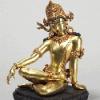
Experiencing nothing while meditating!
Patrick Brown replied to Patrick Brown's topic in General Discussion
Please note the shock lasted three or more seconds and really was like a massive electric shock. It's only happened once so I'm not too worried about it. As I've said in the past I've had ton of mystical experiences. Yes I think the bumble bee that others have experienced is the beginnings of the DMT trip. As you get deeper into meditation you get closer to the sleep state and this can cause DMT to be released in the brain. I actually think DMT is released to awaken the brain from deep sleep although I'm no expert on this subject. No what I experienced was no sound, sensation or anything which is why I called it voidness. My drug experiences suggest that this is the state experienced before crossing to the bardos/lokas/astrals/dream-states. Of course I wasn't looking to enter the dream spheres but just to find peace. So to recap, with my limited knowledge, the buzz is the moving into peace (I'm on a constant buzz) and the peace is like the fulcrum between waking conciousness and dream conciousness. So perhaps it's true to say that voidness is a form of controlled sleep although difficult to master. Just for the record I don't think voidness is the end game but simply an aspect of self cultivation.



